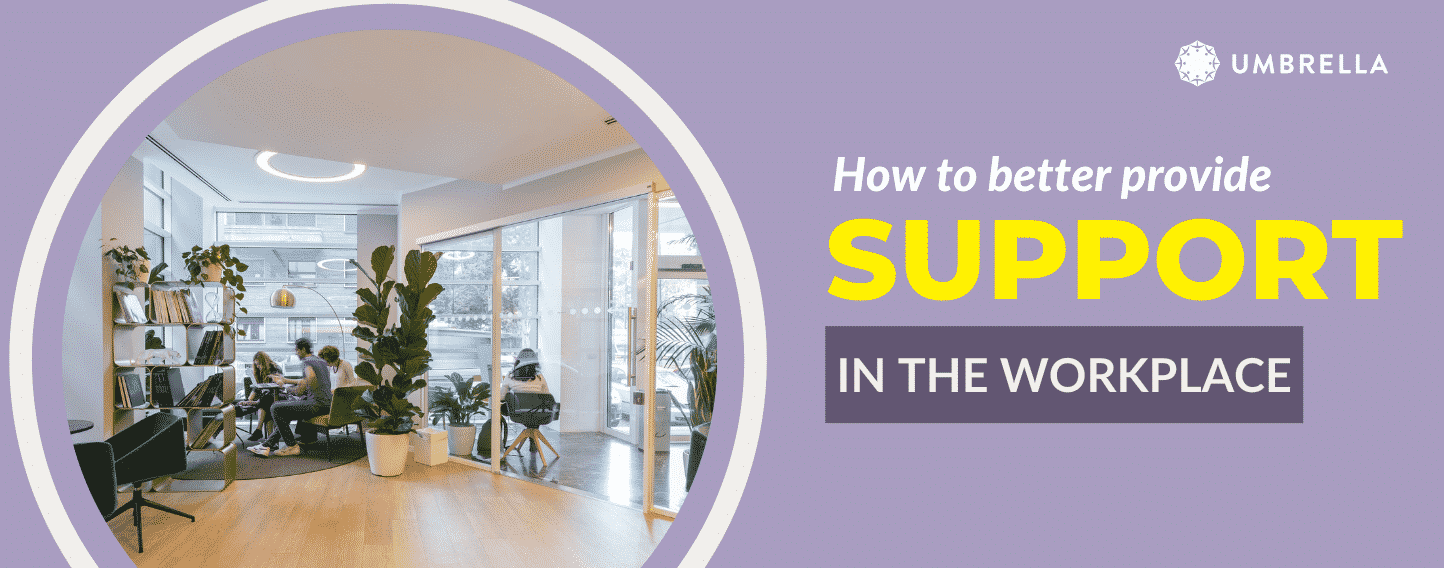Our people are our biggest asset.
This is true at all times. Intensifying this for employers at present, there is widespread recognition that finding good workers has never been harder, while talented people are resigning from jobs to seek more autonomy and latitude in their working lives.
How can workplace leaders create the best environment for their people, and therefore their business, in challenging times? Psychological research is clear on this point – people work best and stay in their jobs longer when they feel safe, trusted, valued and well-supported.
We’re aware this is easy to say (or write) and much harder to do when work demands are sky-high and the “soft” people stuff is low on the priority list. We can deliver the greatest impact in building both wellbeing and high performance when we weave three foundational pillars into business-as-usual, as well as during turbulent times.
These foundational pillars set the tone for other wellbeing interventions – whether these be related to job design, leave entitlements, mental and physical health, team-building or otherwise.
If you’ve ever been involved in a workplace wellbeing event that felt hollow and ineffective, chances are it wasn’t designed or delivered on strong foundations. A workplace “wellbeing morning tea” means very little when you don’t feel fundamentally valued, safe or supported in your job.
First, leaders need to set the tone – in the executive suite and at every level beneath – that wellbeing is a top priority. Research shows that leaders’ emotional state is contagious in teams – especially so during times of uncertainty when emotions run high and people are divided on the best direction to go in.
Leaders need explicit organisational permission (plus encouragement and role-modelling from peers and senior executives) to prioritise self-care and recovery for themselves in order to support their teams to do the same. We all know it’s harder to be calm and supportive for others if we ourselves are overwhelmed or stressed.
We also know that leaders role-modelling wellbeing activities, such as flexible working around family commitments, taking sick leave to avoid presenteeism, or exercising during a lunch break, produce a positive and significant impact on employee behaviour.
Prioritising leaders’ own wellbeing first therefore has a ripple effect, helping to send a non-negotiable message to teams that work should not come at the expense of physical, mental and family health.
Actions like these separate out leaders who pay lip-service to wellbeing but are “too busy” themselves to participate or to take any meaningful steps towards a healthier workplace, and those who embody and encourage wellbeing as a top priority.
Second, workplaces need to actively support a culture of psychological safety by having people’s backs and validating their experiences.
From research on psychological safety, it’s clear that none of us can effectively learn new skills, speak out about mistakes, or meaningfully progress projects if we are fearful or second-guessing ourselves. In fact, psychological safety is widely regarded as the most fundamental ingredient in a high-performing workplace.
“Having someone’s back” in a workplace means encouraging them to try different approaches and have a go at new things, knowing that they will make imperfect attempts, mistakes, or stuff-ups and will sometimes flat-out fail. It means staying consistent with positive, and constructive, feedback and checking in regularly.
We can promote this by “leading loudly” – actively demonstrating the behaviours we want to see from our colleagues ourselves. Leading loudly means being quick to admit when we make mistakes, sharing stories of times where we’ve failed, and demonstrating values of curiosity, experimentation and growth.
Validating other’s experiences is also crucial here. It might sound fluffy, but the science underpinning this skill is sound. Emotional validation involves recognising and accepting emotions of others (not necessarily liking or agreeing with them). When done well, a leader’s validation (“I get that, it makes sense to me you’d feel like that”) acts to “soothe” strong negative emotions like anger, frustration or being overwhelmed, making it possible to engage in a constructive conversation or start a problem-solving process.
Actions like these help to create a psychologically safe workplace culture where others also feel supported to share their own struggles, and feel safe to question decisions and think outside of the box, rather than “keeping mum” and deferring to authority out of fear of backlash or being fired.
Finally, workplaces need to integrate solid communication and feedback channels. Ensuring that people are well-supported in the workplace means ensuring that their problems and needs are heard regularly and – most importantly – acted on swiftly. Given the diversity of personalities in any workplace, our methods of communication must be equally diverse.
Workplaces benefit when they provide various options for people to give feedback, via informal check-ins (face-to-face, text, or otherwise – as suited to the personality of the team member) and more formal meetings and forums. These should be in place at as many different levels of the organisation as possible and should also be complemented by anonymous employee surveys to capture opinions that some people may find hard to give in person.
These are all opportunities to understand the needs of your people – helping to enable a participative approach to strengthening support and wellbeing in your workplace.
Any communication and feedback channels should also operate to identify and reinforce the good stuff – not just the challenges. This means praising and rewarding effort and progress, not only end results or “wins”.
Supporting people well at work is an ongoing process, with some extra challenges right now, both globally and locally. As people are our most valuable business asset, the skills of investing time, resource and care into them have never been more important. Getting the basics right means that wellbeing efforts are viewed as genuine rather than a “tick-box” exercise and real benefits are realised for organisations and all those who work for them.



